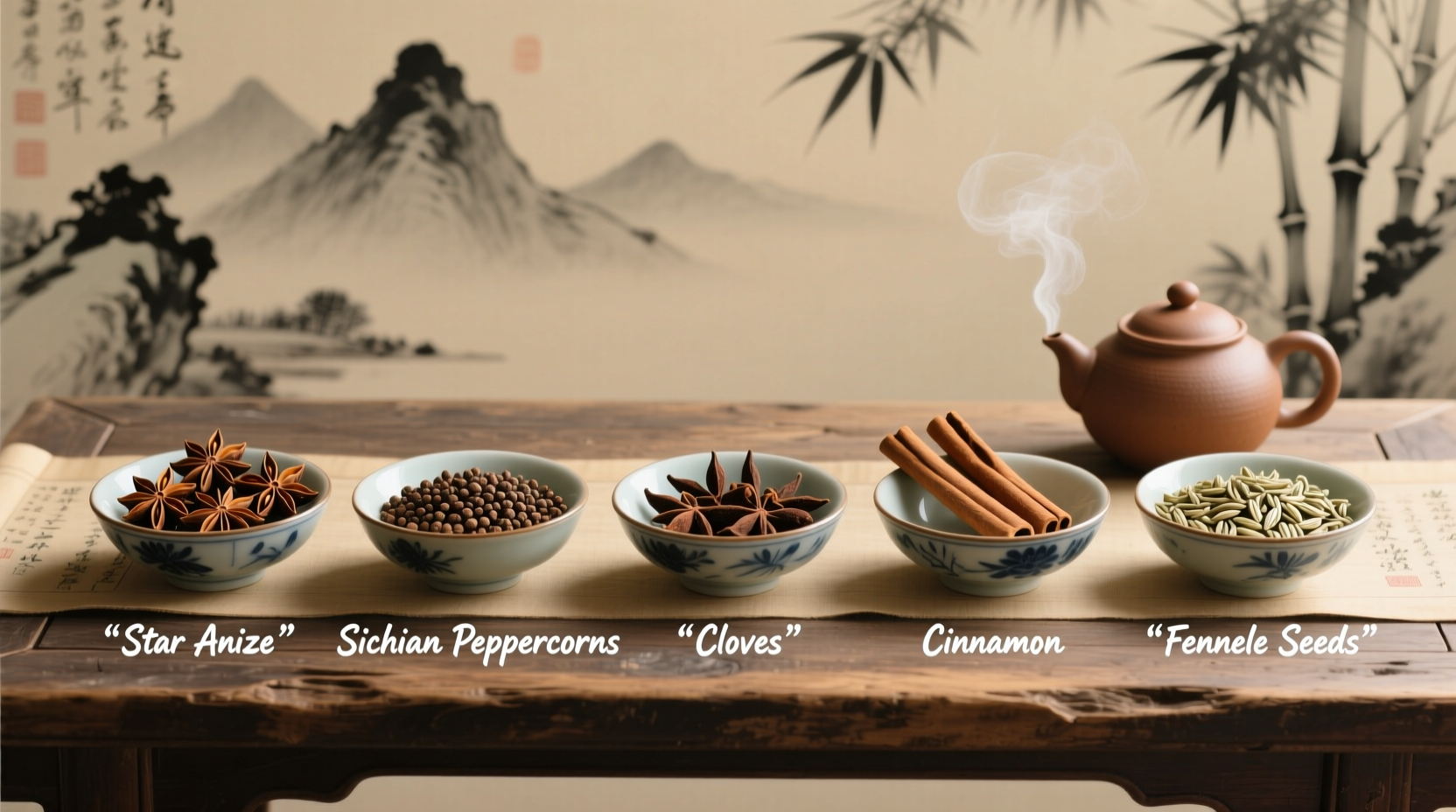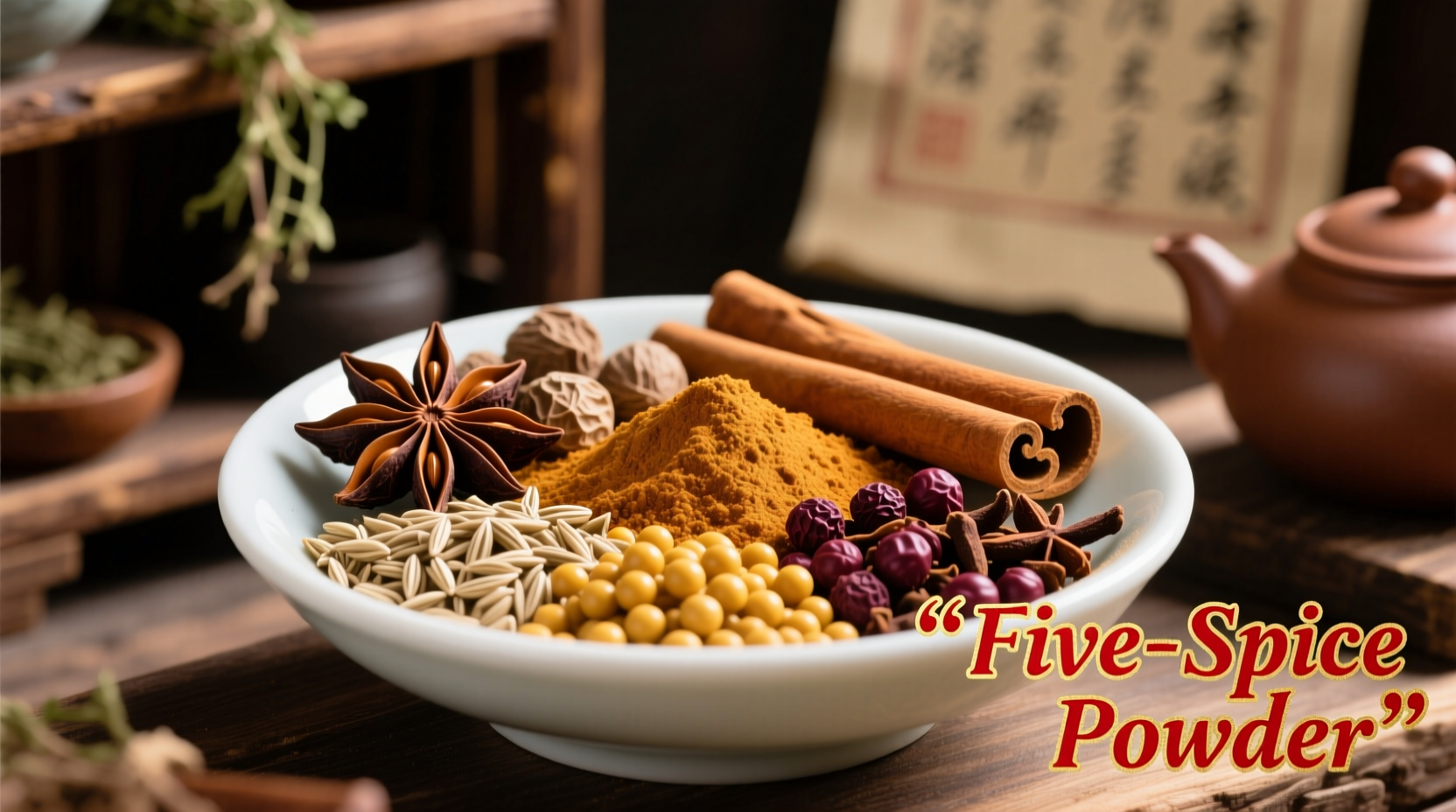Discover exactly what makes authentic Chinese five-spice powder unique, how to identify quality blends, and practical ways to use this essential seasoning in your cooking. This guide provides culinary insights you won't find elsewhere, including regional variations, flavor chemistry, and professional chef techniques for maximizing its potential in both traditional and modern recipes.
The Essential Components: What's Really in Chinese Five-Spice
Despite its name, Chinese five-spice isn't about heat but rather a philosophical balance of the five fundamental flavors in Chinese culinary tradition. Each component serves a specific purpose in creating this harmony:
- Star anise (80%) - Provides the dominant licorice-like sweetness and aromatic foundation
- Cloves (10%) - Contributes warm, pungent notes with subtle bitterness
- Chinese cinnamon/cassia (6%) - Offers sweet warmth without the delicate notes of true cinnamon
- Sichuan peppercorns (3%) - Delivers the distinctive "ma" numbing sensation
- Fennel seeds (1%) - Adds subtle earthiness and completes the flavor circle
The precise ratios vary by region and chef, but this proportion creates the balanced profile that has endured for centuries. Unlike Western spice blends that often prioritize heat, Chinese five-spice focuses on creating a complete flavor experience where no single note dominates.

Authentic vs. Commercial Blends: What to Look For
Not all five-spice powders deliver the authentic experience. Many commercial versions substitute cheaper ingredients or alter the traditional balance. This comparison helps you identify quality blends:
| Authentic Traditional Blend | Common Commercial Variations |
|---|---|
| Contains all five traditional components | Often replaces Sichuan peppercorns with black pepper |
| Uses Chinese cinnamon (cassia), not Ceylon cinnamon | May use cheaper cassia alternatives |
| Visible whole spices when ground fresh | Fine, uniform powder with no visible components |
| Bright reddish-brown color from quality ingredients | Dull brown color from stale or inferior components |
The Historical Evolution of Chinese Five-Spice
Chinese five-spice isn't just a random collection of spices—it represents centuries of culinary philosophy and trade history:
- Tang Dynasty (618-907 CE) - Early formulations emerged as part of Wu Xing (Five Elements) philosophy applied to food
- Song Dynasty (960-1279) - Became standardized as trade routes brought consistent access to all five components
- Ming Dynasty (1368-1644) - Documented in culinary texts as essential for balancing flavors in meat dishes
- 19th Century - Spread globally through Chinese diaspora, particularly to Southeast Asia and North America
- Modern Era - Regional variations have developed while maintaining the core five-component structure
Professional Applications: How Chefs Use Chinese Five-Spice
Understanding how to properly use Chinese five-spice separates authentic preparations from imitations. Professional chefs employ specific techniques:
Dry Rubs and Marinades
For roasted meats like char siu (Chinese BBQ pork), combine five-spice with honey, soy sauce, and Shaoxing wine. The key is allowing 4-12 hours for the spices to penetrate—never apply directly before cooking as this creates bitterness.
Broth and Soup Enhancement
Add a small amount (1/4 teaspoon per quart) to meat broths during the last 30 minutes of simmering. This technique appears in traditional recipes from the USDA National Agricultural Library archives documenting early Chinese-American culinary practices.
Vegetable Preparation
Stir-fry vegetables like bok choy or green beans with just a pinch of five-spice and garlic. The delicate balance enhances without overwhelming—the Sichuan peppercorns provide subtle complexity rather than heat.
Practical Storage and Freshness Tips
Chinese five-spice loses potency quickly. Follow these professional storage methods to maximize shelf life:
- Store whole spices separately and grind only what you'll use within 2 weeks
- Keep in airtight containers away from light and heat sources
- Freeze whole spices for up to 6 months to preserve volatile oils
- Never store near strong-smelling foods like onions or coffee
A simple freshness test: rub a small amount between your palms. Authentic, fresh five-spice should release a complex, layered aroma within seconds—not just a single dominant scent.
Common Substitutions and Regional Variations
When authentic Chinese five-spice isn't available, these substitutions maintain flavor integrity:
- Four-spice variation (common in Fujian cuisine): Omit Sichuan peppercorns for a milder profile
- Southern Chinese version: Increased star anise with additional licorice root
- Household substitute: 1 part star anise, 1/8 part cloves, 1/10 part cinnamon, pinch of white pepper, pinch of fennel
Remember that Vietnamese five-spice (ngũ vị hương) differs significantly—it typically contains additional ingredients like coriander and anise seeds, creating a distinct flavor profile used in dishes like bánh mì.
Why Understanding Chinese Five-Spice Matters for Modern Cooking
Mastering this blend opens doors to authentic Chinese culinary techniques. Unlike single-note seasonings, Chinese five-spice creates multidimensional flavor that transforms simple ingredients. Professional chefs at institutions like the National Museum of Food and Drink emphasize that proper use of five-spice represents understanding Chinese cooking philosophy—where balance trumps intensity.
When shopping for authentic blends, look for products listing all five specific ingredients without fillers. The best versions will have a vibrant aroma with no single spice dominating—indicating careful balancing according to traditional principles that have evolved over centuries of culinary refinement.











 浙公网安备
33010002000092号
浙公网安备
33010002000092号 浙B2-20120091-4
浙B2-20120091-4